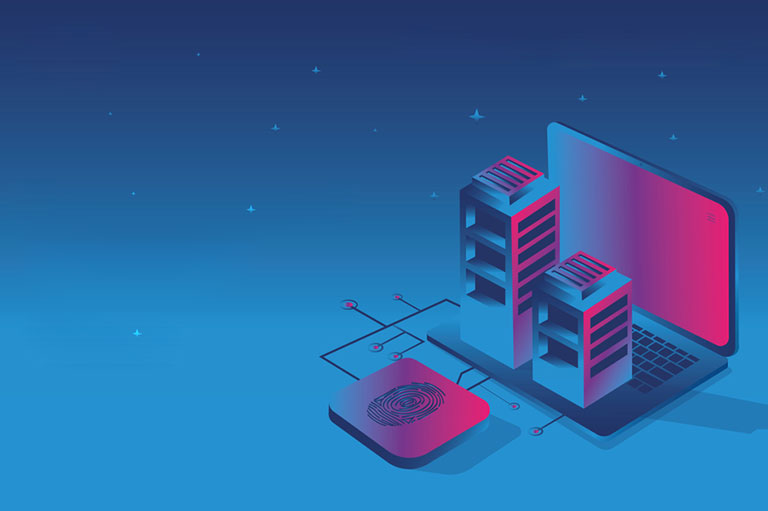Narender Yadav / May 27, 2019

With every passing day, we can see the creation of massive amounts of data. For instance, by the year 2025:
Collected by various organizations, data can be crucial in taking numerous decisions. But the catch is, where do they store the data and how? This post highlights some of the disruptions in data storage technologies, which can effectively solve these problems. Let’s look closer:
NVMe-oF
Non-Volatile Memory Express-Based Storage offers better performance as compared to the traditional SSD disks. This technology can accelerate the transfer of data between the enterprise and the client systems, and SSDs. This transfer takes place over a computer’s speedy PCIe bus.
Additionally, it offers multiple queues coupled with low-latency commands. This is what transfers the data to the SSD disks in chips and blocks. This guarantees an exponential increase in the overall performance.
NVMe-oF or NVMe over Fabrics, on the other hand, lets enterprises share the high-performance and expensive NVMe storage across several servers. Therefore, any server that is connected to the switched fabric will have access to the storage.
Blockchain
Yes, you read it right. Blockchain technology can alter data storage and take it to a new level by decentralizing it. In essence, it breaks the files into several pieces, encrypts them, and sends them to hard drives at different locations (Sharding). This will enable the individuals as well as enterprises to rent out their hard drive space and earn revenue.
Decentralized data also translates into more security and privacy as opposed to centralized data. During the process of Sharding, each file is encrypted with a private key that makes it impossible for any node in the network to read the file. Since the entire file is never available, it becomes difficult to read the entire content at one go. Moreover, blockchain storage costs can reduce the price of cloud computing manifold and provide un-surpassed data transfer speed as well.
Edge-Computing
Edge-computing will become a key use-case driving innovative data storage solutions. It has the potential to have a profound effect on computing and data distribution architectures. For now, there may not be a clear vision as to what needs to be stored at the edge and what needs to be forwarded to a central storage system.
Edge-computing processes data at the edge of the logical unit/source of data such as IoT devices. They gather data and process it in the close proximity of the source. This is done by using a processing model that is leveraged by the computing power provided by the cloud. The processed data is then related back to the source for more analysis or processing, should the need arise. This is what decreases the overall data transmission and the turnaround time, data load and therefore, frees the resources for other core functions.
With IoT devices becoming more ubiquitous, more powerful, and 5G-driven networks becoming high-capacity, it is safe to say that the edge will be adopted by firms that are going to implement IoT. Sample this, there will be more than 75 billion connected devices worldwide by 2025 – or 10 internet-driven devices for every person. This is why the calls for greater computing power at points far from the data centers. The aim is to drive a prompt response where it is needed when it is needed.
Hyper-Converged Data Storage
Hyper-converged data storage is a storage management system, which combines storage, virtualization, compute, and also, networking technologies as a single physical unit. This is managed as a single system and takes the concept of converged data storage a step further. It is obvious that the system is managed at the software level. This software can run on any vendors server hardware. It allows enterprises to establish a long-lasting relationship with a server vendor/organization, which needs to cut the cost of storage infrastructure.
Software Defined Storage (SDS)
Made-to-match cloud storage, SDS, can maximize the performance and capacity, with no downtime. The performance in itself is the disruptive feature that this technology brings to the table. It especially revolutionizes enterprise data storage. If your enterprise strategies involve cloud storage, then this may be the best option that you can settle for.
For this, you need to select the option that lets you best scale the technology. One of the ways to go about this is to purchase a few, power-packed servers. This will allow maximizing the use of physical space.
Another essential property of SDS is that the hardware will be able to replicate the data across long distances. This way, even if the main data center fails, the services can always go to a working data center automatically.
Adopt These Futuristic Data Storage Solutions for Your Enterprise
These are some of the upcoming disruptions in the enterprise data storage landscape. If you are looking to storing massive amounts of data, keep an eye out for how these technologies are progressing. Which of these will you place your bet on?




